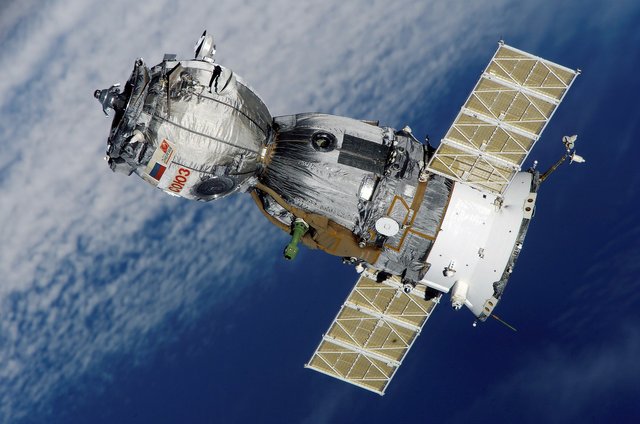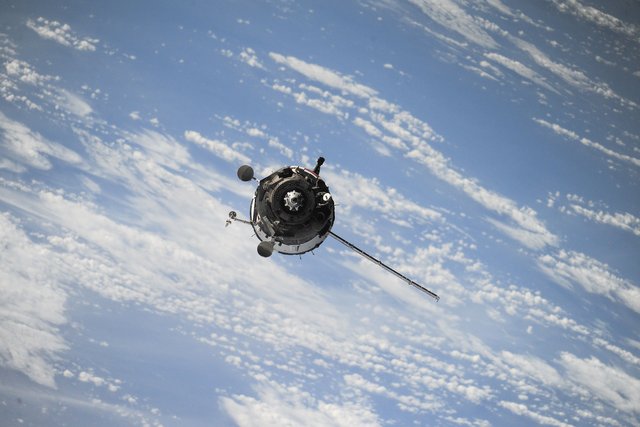Satellite is an incredible marvel of modern technology and science. Satellite technology is closely associated with our daily lives and work. There is no doubt that many important tasks would not have been possible without the satellite. But do you know how the satellite works? Let's not know.
What is the satellite thing? Does it work? How does a satellite work?
The word satellite comes from the Latin word for 'follow'. A satellite is an object that orbits another large object at its center.
Now your question may be, is the earth also a satellite? The answer is yes, the earth is also a satellite. Because the earth revolves around the sun. In the same way, the moon is also a satellite because it orbits the earth. But these are natural.
However, in general we understand the term satellite to mean man-made satellites or artificial satellites. It is a device that, after being launched into space, orbits the earth or any other body in space. Basically, man sends these satellites into space using the excellence of science for his various works.
There are currently thousands of artificial or man-made satellites orbiting the Earth in space (public-private). And each of these satellites is engaged in different activities. Some of them take pictures of the earth, while others collect pictures of other planets. Which again helps meteorologists to forecast the weather and keep an eye on the hurricane's trajectory. Besides, the satellite is also helping to give a hint of various types of natural disasters.
Some of these satellites are again orbiting to take pictures of planets, the sun, black holes or distant galaxies. There are also some satellites that are primarily used as a means of communication; Such as TV signals, phone call connections around the world, etc. are used.
The Global Positioning System (GPS) consists of more than 20 satellites. These satellites are able to detect your exact location if you have a GPS receiver.
What are the parts of a satellite?
Satellites come in a variety of shapes, sizes and sizes. However, each satellite usually has 2 parts. Antenna and power source (power source).
Antenna: Antenna works to receive and collect information. Antennas basically transmit information from the earth. There are different types of antennas such as monopole, dipole horn, reflector, parabolic, microstrip etc. The type of antenna depends largely on the application used in the satellite.
Solar cell and battery backup: Solar panels and batteries are the source of energy. Solar panels generate energy by turning sunlight into electricity. Solar cells and batteries are desperately needed to keep the satellite running. Solar cells act as a source of energy in the presence of sunlight. And if there is no sunlight, the battery acts as a source of energy. Many NASA satellites carry cameras and scientific sensors.
How are satellites sent and orbited the earth?
Most satellites are sent into orbit via cargo bays from rockets or space shuttles. To cross the Earth's gravity, the rocket has to run at a speed of 25,039 miles per hour. A satellite can orbit only when there is a balance between the gravitational forces of the earth.
Without this balance, the satellite will fly in a straight line in space or fall to the earth. For this, the artificial satellite was launched into orbit at an altitude of 150 miles at a speed of about 16,000 miles per hour.
The speed depends on the height of the satellite. The satellite, located 22,223 miles above the earth, rotates around the earth at a speed of 600 miles per hour. Artificial satellites also orbit the earth 24 hours a day. Artificial satellites that transmit TV and radio signals and monitor the weather are usually located 36,000 kilometers away from the earth.
The satellites orbit at different heights, speeds and paths. However, there are two common orbits - geostationary and polar.
Geostationary satellites travel from west to east over the equator. As the satellite moves in the same direction keeping pace with the rotation of the earth, it seems from the earth that the geostationary satellite is stationary in the same place.
Polar satellites travel from north to south from one pole to another. These satellites make it possible to capture the whole world at the same time as the earth rotates downwards.
There is no collision between the satellites because, in order for one satellite to avoid the other, it is placed in orbit at the time of launch. However, NASA and other international organizations monitor the movement of the satellite. As a result, there is no conflict. In February 2009, two American and Russian satellites collided in space, the first man-made satellite to collide.
How does the satellite work?
Data is sent from the earth using radio waves, artificial satellites receive them and amplify them and send them back to the earth. Artificial satellites use two different frequency waves to receive and transmit signals. Signals coming to Earth from artificial satellites tend to be much weaker or less powerful, so the signals are first centralized using a DIS antenna and then received with a receiver and used for necessary purposes.


Interesante amigo tiene mucha información importante en su post
Downvoting a post can decrease pending rewards and make it less visible. Common reasons:
Submit